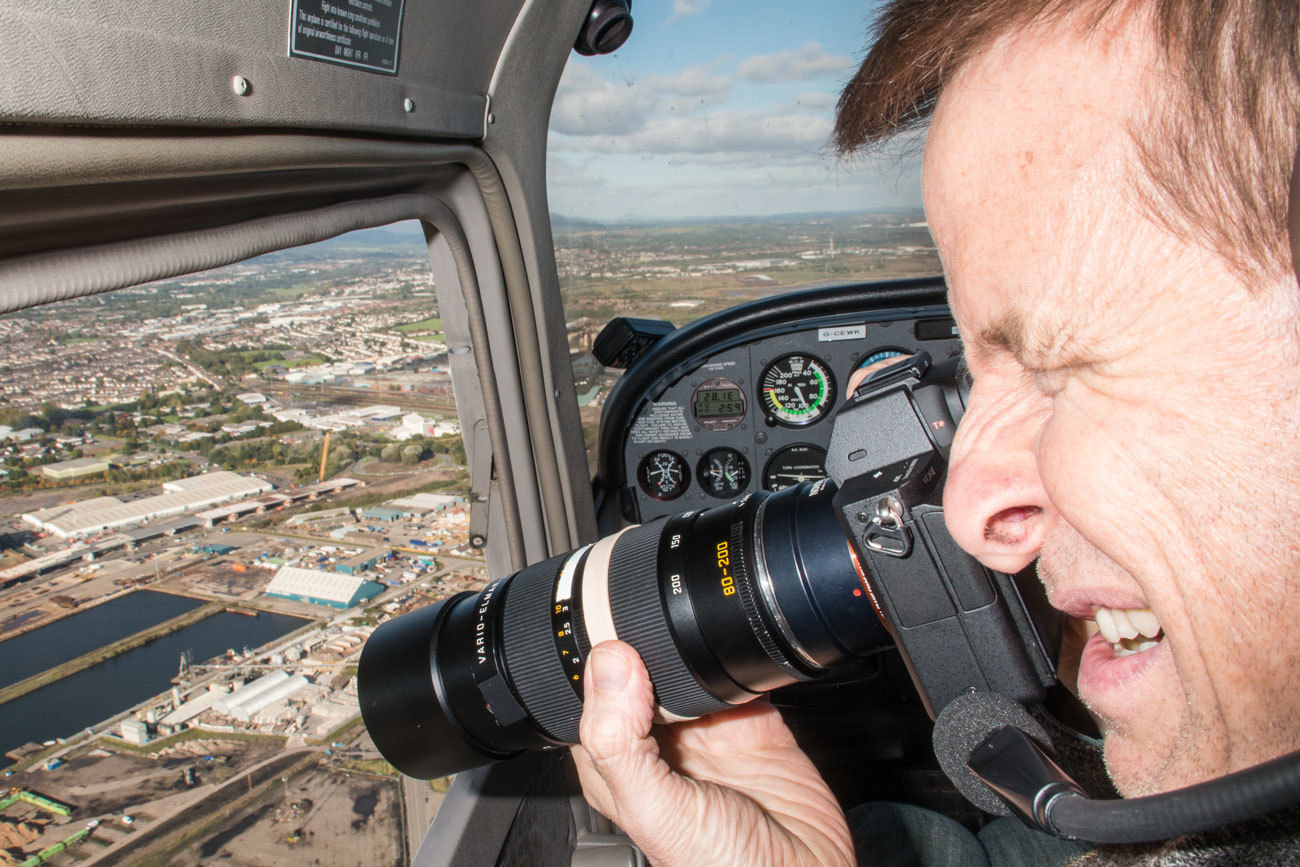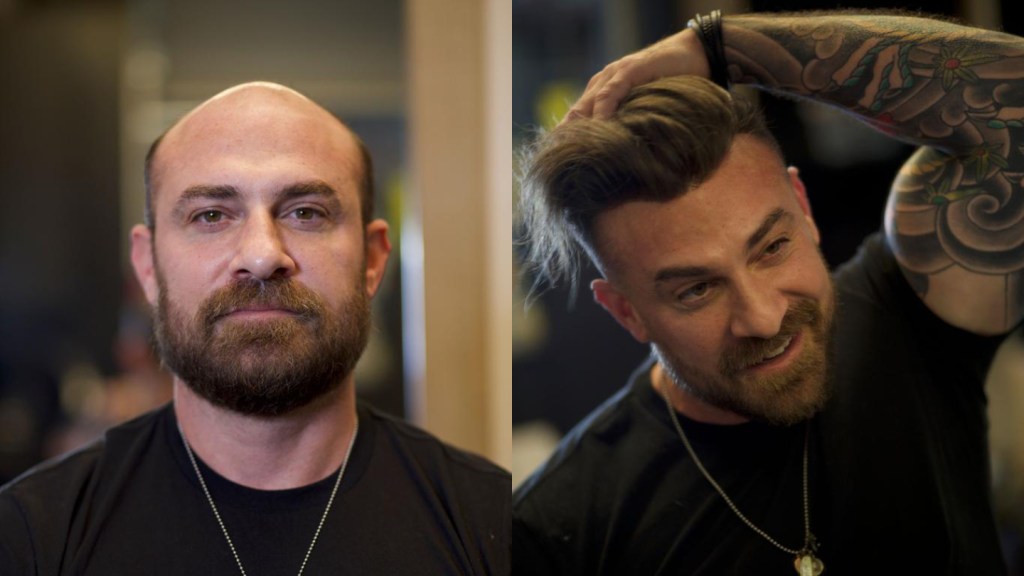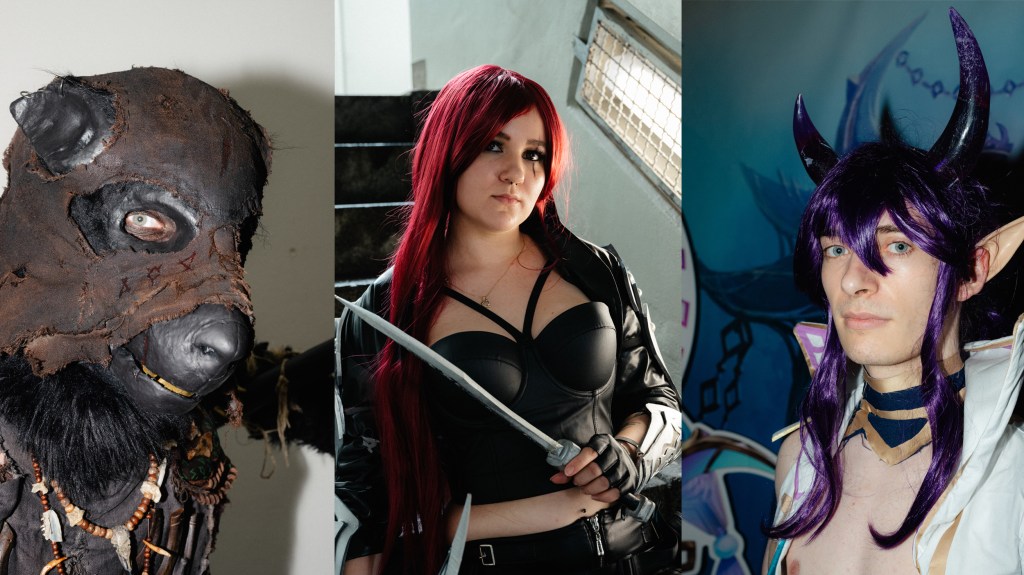
Photos by Alexander Coggin
This story appeared in the November issue of VICE magazine. Click HEREto subscribe.
“Let’s hip-hop and ride!” J Henry Fair swaggers across the tarmac towards the Cessna 172 propeller plane. Stalking the runway like a puma, his wiry frame is coiled into a light jacket, grey fleece and nondescript trainers. In his right hand is an obscure, battered Nokia, the model of which I failed to identify when I searched for it later on Google.
Videos by VICE
“That nice new iPhone you have,” he says glancing over at me. “Did you know a gorilla was eaten for that iPhone?” I stare dumbly at my iPhone, reeling from this burn, delivered with searing precision, only dimly aware of the mineral coltan, the mining of which in DRC is helping fuel civil war and the decimation of gorilla populations.
“Is that really why you don’t use a smartphone?” I ask, squeezing into a space the size of a suitcase at the back of the four-man Cessna. “Well, there’s surveillance issues,” he says. “I don’t want to be listened in [on] by the anyones. And the guys that dig coltan eat gorillas. Is it one gorilla for one smartphone? Probably not. Is it one gorilla for 20 smartphones? I don’t know.”
Fair is a self-described obsessive: a febrile, charismatic environmentalist who used to switch off the lights in his friends’ houses and inspect their toilet paper to check it was recycled—until they stopped inviting him for dinner. He is a little more chill these days, but his work impacts every decision he makes. He last ate in a fast food restaurant 15 years ago, when he was taking photos of phosphate mining in Florida. “You have to understand America is a food wasteland,” he says. “I was in Florida on a shoot. I was out in the boondocks in Florida. I think I got a salad at Hardee’s.”

Fair’s focus is necessary in a world that sometimes offers little reward for the kind of work that he does. He has made it his life’s work to photograph industrial pollution from the air, documented in a book, Industrial Scars. It is a collection of beautiful, sometimes abstract, usually ominous photographs. And it is why, at 2.30 PM on a Wednesday, we find ourselves roaring down a runway, heading for the Bristol Channel to score some toxic rivers.
It’s Fair’s first time taking photos in the UK. He’s here for less than 24 hours, slotting the shoot in between exhibitions in Europe, and so our 70-year-old pilot, Chris Puddy, whose work for Cotswold Flying School usually involves a meandering recce over the countryside, is under strict instructions to squeeze everything we can out of the flight. The ground falls away, and suddenly we’re out over the Severn estuary, floating a few hundred metres in the air, the silver patina of light on the sea glinting like mercury. I catch a momentary glimpse of Fair’s world, which exists 1,000-odd feet above ground and looks like SimCity: a planet of vast horizons, pockmarked with little industrial sites.
“Alright gentlemen,” says Fair. “Hold on to your hats.” The plane banks sharply and I lose my iPhone. Gorillas flash through my mind. I scramble around on the floor at a 45-degree angle, air roaring into my face as Fair opens the window, half clambering out to get a better shot. “Boy, this river gets a lot of shit pumped into it,” Fair says, nose pressed to the back of his camera.

The River Severn is the longest in Britain, and the funnel-shaped estuary has over the years been the site of a dizzying array of major industries, according to the UK’s Marine Biological Association (MBA), including smelters, incinerators, fertiliser and chemical plants, coal and steel plants, paper mills, chemical and pharmaceutical manufacturers, and nuclear power plants at Hinkley, Berkeley and Oldbury. Sewage from four major cities is also discharged into the estuary. The chemicals and pollutants include metals, hydrocarbons, PCBs, pesticides and radionuclides. But a decline in heavy industry and the introduction of pollution control in the latter half of the 20th century led to a downward trend in output, according to the MBA.
“Mostly, your industry has left,” says Fair. “You’ve offshored your industry. So of course most of the industry has been shipped to a place where regulations are lax.” These days, the Severn estuary is useful in a different kind of way: it has a tidal range of 15 metres, the third-highest in the world, after the Bay of Fundy in North America and Ungava Bay in the Hudson Strait. A tidal barrage—a sort of dam that harnesses tidal energy—could provide, according to some models, up to 5 percent of the UK’s electricity output. Unfortunately, the proposal is yet to prove it’s worth the investment. “Why aren’t we figuring out how to capture that tidal movement in the Bristol Channel and therefore generate a whole new industry?” says Fair. “And therefore build more jobs, build more industry. It’s our job as the intellectuals to lead that. It’s not the job of the person who lost his or her job in Port Talbot and is praying this toxic steel mill doesn’t leave like all the rest.”
Later, when the flight is over, we check out the pictures. There is Port Talbot steelworks, but I sense that a city like Newport is not a part of the world with the kind of exposed planetary wounds that make Fair’s best pictures so compelling, so abstract. A shot of Canada’s tar sands, for example, shows blood-red molten sulphur oozing over a pyramid of solid yellow sulphur, a by-product of the tar sands refining process. And rainbow-coloured oil spills glimmer on the sea in his photos of the 2010 Deepwater Horizon disaster. It must occur to him that Britain’s historic pollution is much less visible, that the most damning indicator of climate change, the concentration of greenhouse gases, is completely unphotographable. “Absolutely,” he says. “That has occurred to me and it is what it is. You can’t photograph radiation. We photograph what we can photograph. That’s why so often what we photograph is waste pits.”

Fair, 56, grew up in South Carolina, in a comfortable upbringing with a father who worked in real estate. His family were not overtly interested in the environment, he says, but he had a social conscience from a young age. “It was a very bourgeois world, but the racism issue was right there. There was a conflict between the bourgeois world I grew up in and the poverty and inherent injustice,” he says. At 20 he moved to New York to study journalism at Fordham University, and although he’d taken photos since he was a teenager, it took him a few years before he found his role straddling the worlds of activism, journalism and art. But he finds it hard to pinpoint where his passion stems from, not least because his father and brother do not share it (his mother passed away years ago).
“He’s saved a lot of land,” he says of his father. “Now, he’s also filled in his share of wetlands in his day, you know? I mean, do you know the Tom Waits song ‘Sins of My Father’? It’s a great song!” he laughs. “So in a way, yes, he’s got an environmental conscience. He does! It would not be at all fair to say my father does not. Not like I do, though.” But his father and brother for the most part aren’t on board with Fair’s mission. “I’ve tried to give up on the arguing. Right? Because you’re not going to change each other’s minds. And why spoil your time together, which is so short?” Fair has realised that his obsession can make him difficult to live with at times. He has a 22-year-old daughter and is separated from his wife. He describes the breakdown of a previous relationship. “Obsession about water consumption can make a partner…” he pauses, choosing his words carefully. “If you bitch to your partner about her water consumption, it’s not going to lead to a good relationship.”
Fair feels most validated when he’s encouraging other people to make changes that help the environment. “What’s most important to me is when someone tells me: ‘Your picture’s changed me; your picture’s caused me to be a vegetarian,’” he says. “I really believe that buying recycled toilet paper has more impact than voting,” he adds. “If you just change your toilet paper you save a forest. It’s that simple a decision.” When pushed, Fair says he’s a Bernie Sanders supporter who regards Trump as a neo-fascist, but really he has no interest in the power of politics to effect change. He is not even on the electoral roll, a decision he took to ensure that jury duty did not distract him from his work, although he would never tell anyone else not to vote.
In truth, Fair is a lone wolf: a hunter in his own way, combing the landscape for the tracks of the most dangerous animal on earth.
Industrial Scars is out now, published by Papadakis.




